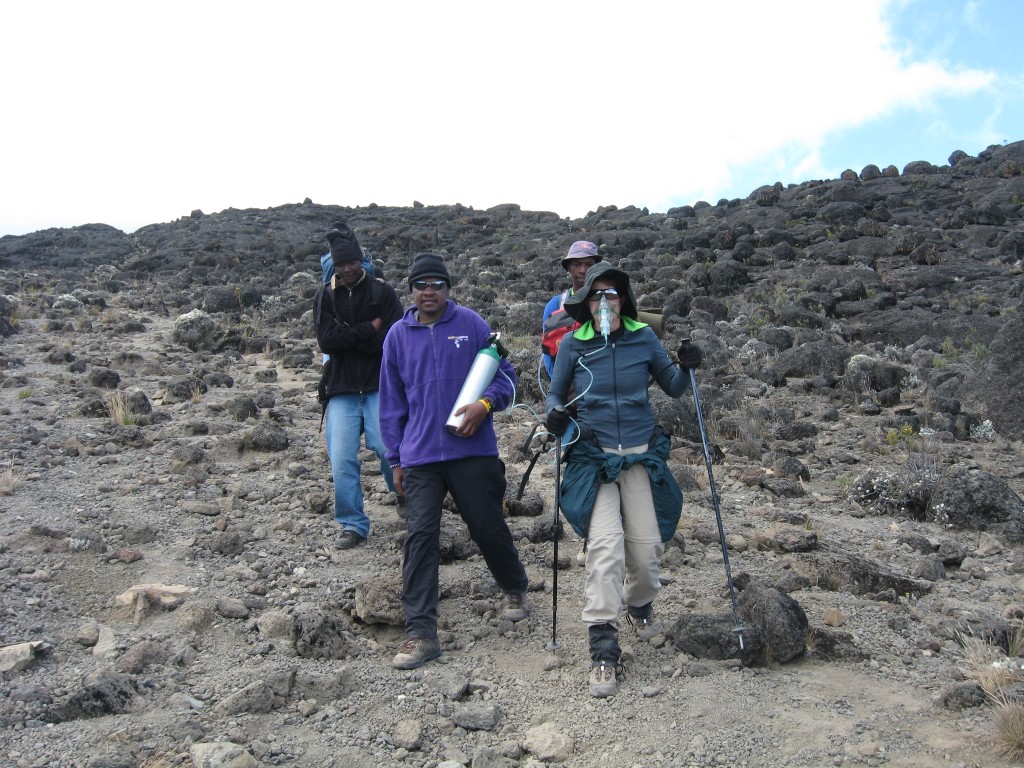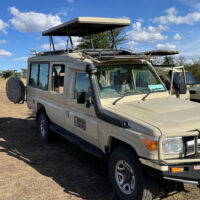‘The mountain decides’: Turning back on Kilimanjaro
09.20.2010

Some like to put it this way: The mountain decides. And because so little is known about the high-altitude illness that claims the most lives at high altitude, the legend lives on. Because HAPE (high-altitude pulmonary edema) can strike anyone, without warning, on any climb.
Kathleen, who at 55 had been training for eight months with her niece Kami to climb Mt. Kilimanjaro with Embark this past August, at first exhibited no symptoms that, without emergency treatment, she might have died up there. She was, quite simply, tired.
It really didn’t get tough until day three of the climb. Day one, they hiked from roughly 7,000 feet to 9,000, and again on day two they made it up to 11,000 feet. But on the third day, which involved another 2,000-foot climb in altitude, Kathleen, who had noticed exerting more effort with each passing day, was beginning to feel tired enough to wonder whether she’d summit:
When we got to 13,000 the third day, we got there in the afternoon, and I just felt tired. I didn’t have trouble breathing, I was just tired and glad to get there and relax. It felt like an effort to get to our tent. I remember talking to my niece in the mess tent and saying, “So what if I can’t make this?” At that point I was thinking it was more of a mental push, because I could see it getting progressively more difficult.
On day four, as they set out toward Lava Tower on the steepest part of the climb thus far, Kathleen began to really struggle. Steve, the assistant guide, noticed right away, and offered to carry her daypack. It couldn’t have been more than 10 pounds, and the fact that not having to carry it felt so good was a sign that Kathleen was really starting to struggle.
About an hour before reaching the tower, Kathleen was having to stop regularly. There was no scramble, but to Kathleen the grade felt steeper and steeper. And when they finally made it, all she could think of was lying down. But when she did, all she could do was cough, no matter what position she tried.
Later that night, after dinner and games, Kathleen went back to her tent to try again for quality sleep. But, she says:
It was the same thing. As soon as I laid down–just coughing, coughing. Terrible coughing. As the night wore on it got worse. I got up at 1 in the morning and felt really tired going 20 yards to the bathroom tent. I went back in and found that the only way to get relief was to lie on my stomach and prop myself up on my arms. I woke up a half hour later and my arms were killing me.
At 4 a.m., Kathleen had to get up and go to the bathroom again, and at that point she was so fatigued and worried about having bronchitis that she woke up Freddie, the head guide. What kept throwing everyone off the HAPE trail was that Kathleen was only experiencing fatigue and cough, without the very common nausea and headaches most people have to suffer through. But Freddie played it safe, put her on oxygen, and said they’d have to wait for dawn to head down.
At first light Kathleen had to say goodbye to her niece Kami and head down the mountain, with Freddie carrying her oxygen tank. It was tough to see the disappointment in Kami’s eyes, to know that Kami now had to push ahead on her own, but Kathleen was so exhausted she knew there was just no other way:
The assistant guide Steve came into my tent and packed for me. Kami of course is really sad that she has to go without me. And they gave me more oxygen. He measured our PO2 every day, and he would measure morning and night. It’s a measurement of how much oxygen your blood is carrying, so how much energy you have, and if everything is normal it’s 100 percent. Sometimes in the morning it would be 80, 84, just because you haven’t been moving yet. And that morning, mine was at 54. And when I came home my nephew said people are comatose at 50.
When she coughed up the color orange, Freddie knew for sure it was HAPE, but by this time they were almost back down to the emergency vehicle that would take them to Moshi.
“I’m not feeling bad about it now,” Kathleen says today, just a month after her return. “I had a great adventure.” Kathleen got to spend eight months preparing with her niece; got to travel to Africa; got to see the joy in Kami’s face when she came down from the summit. And she still gets to tell people she climbed Mt. Kilimanjaro. She just didn’t quite make it all the way.




